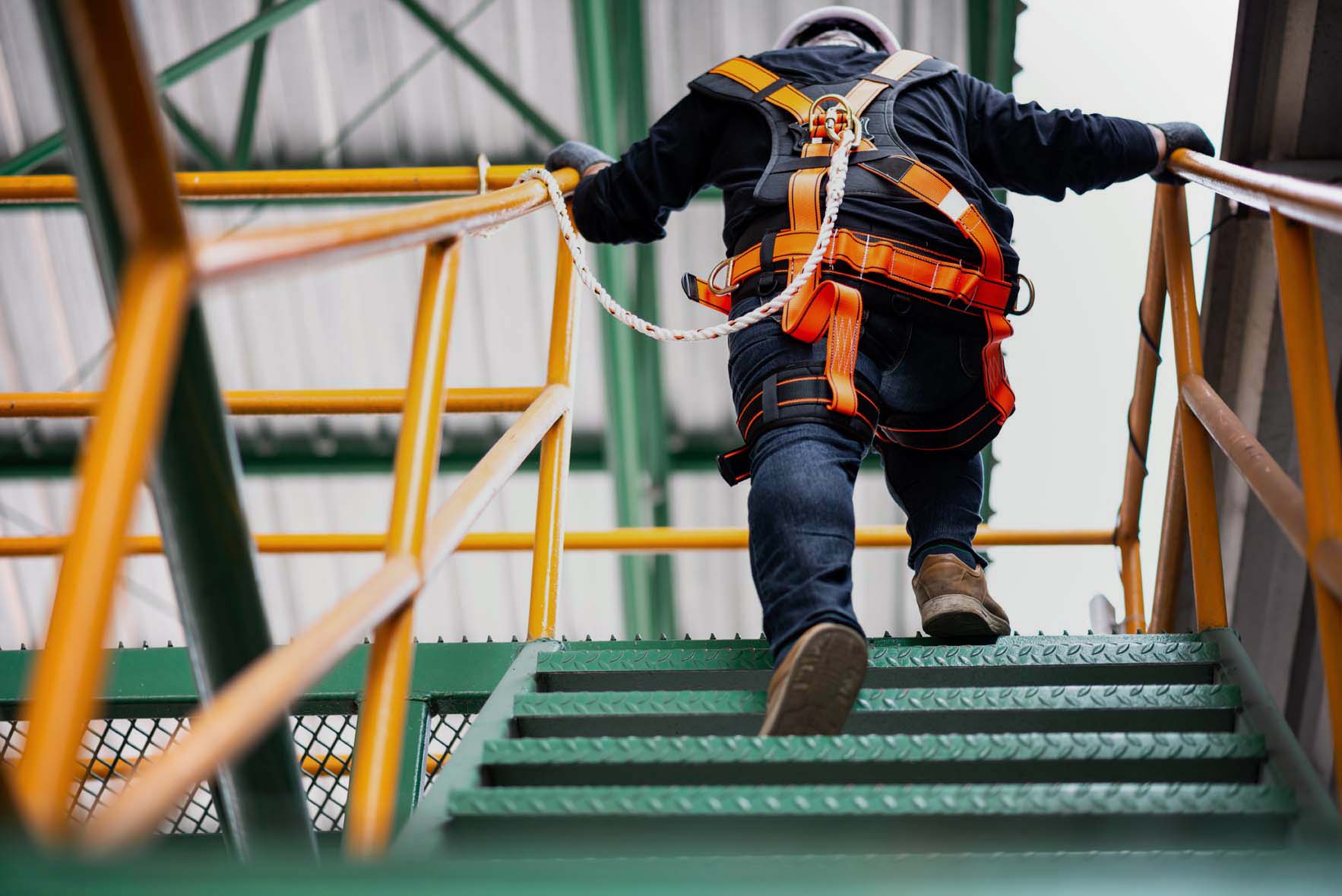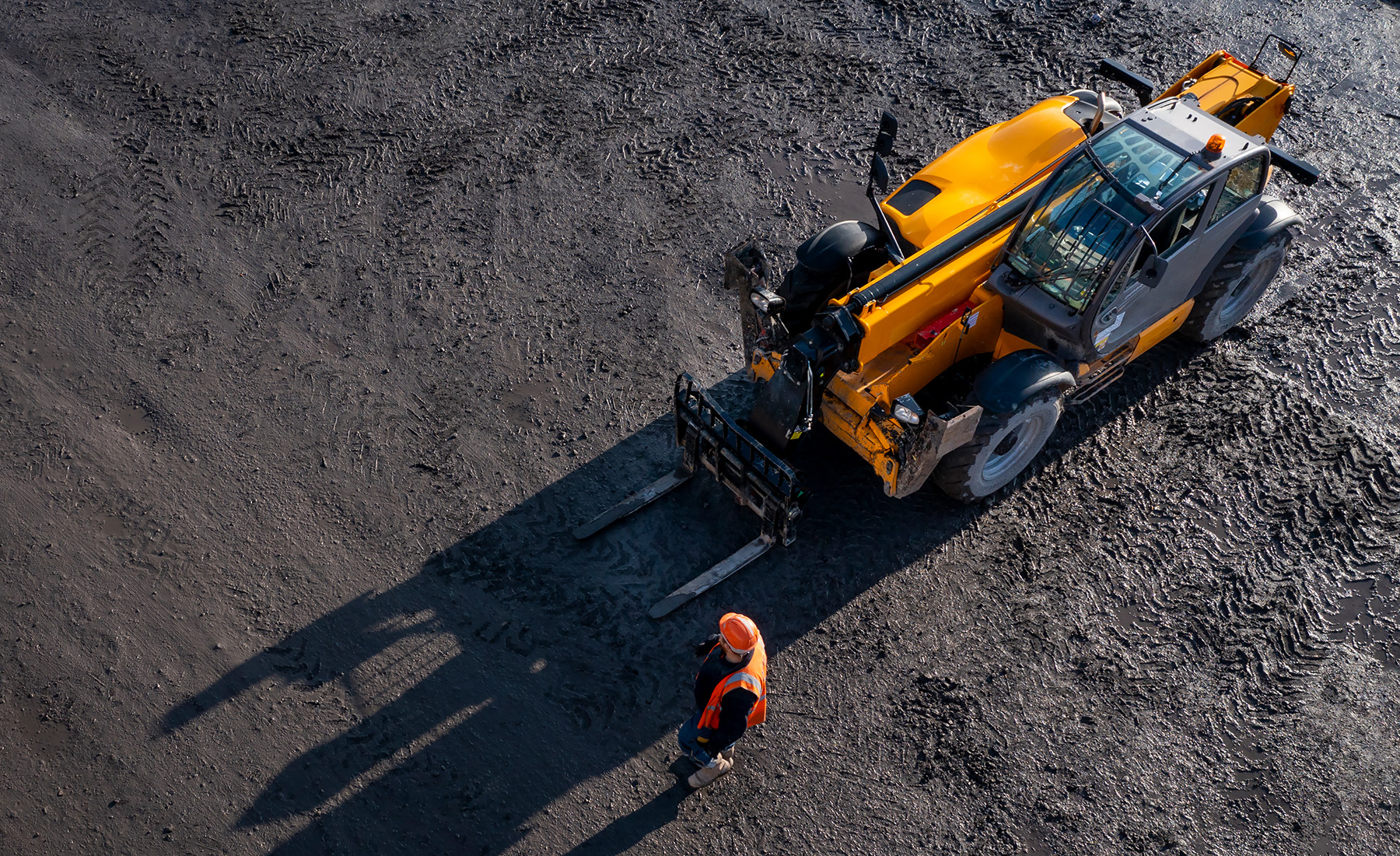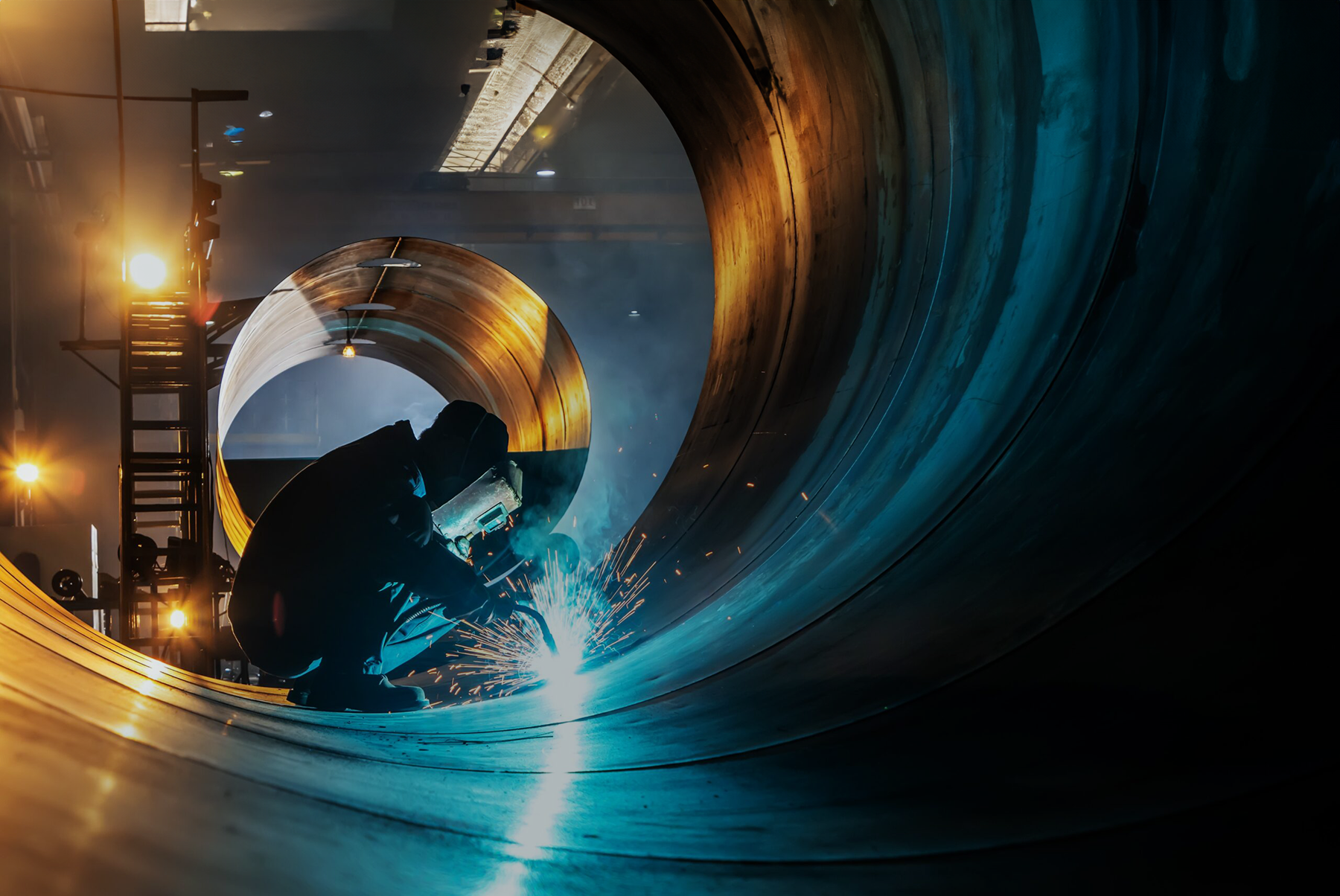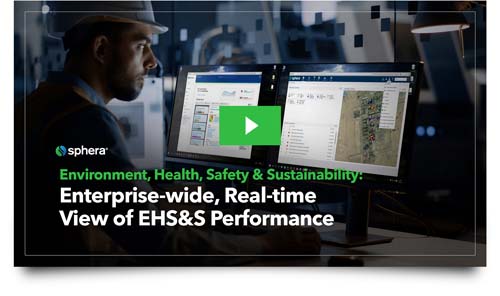For World Day for Safety and Health at Work, Andy Bartlett discusses a persistent problem that has led to countless incidents: shift handovers.

James Tehrani:
Welcome to the SpheraNOW podcast, a program focused on safety, sustainability, and productivity issues. I am James Tehrani Sparks editor-in-chief. Today, Andy Bartlett Sphera’s solution consultant for operational risk management returns for part six of the always popular Andy’s Almanac on Accidents. We’ll be talking about shift handover challenges. We also will be discussing world day for safety and health at work, which takes place on April 28th. Thank you so much for joining me again, Andy.
Andy Bartlett:
Nice to speak to you again, James. It’s been a while since the last one, I think.
James Tehrani:
Yeah, it’s been a while, but not too long. So let’s jump into this World Day for Safety and Health at Work first. Any thoughts on that?
Andy Bartlett:
I looked at the link that you sent me and I was shocked when I looked at the first paragraph, when it said every day, 6,300 people die as a result of occupational accidents or work-related diseases. That’s more than 2.3 million deaths per year. And within that there’s 317 million accidents occurring on the job annually. Many of these result in extended absence from work, the human cost of this daily adversity is vas,. And the economic burden of poor occupational safety and health practices is estimated at 4% of global gross domestic product each year. Now it didn’t have how many of those accidents resulted from poor shift handover, but I guess there would be a few in there from our experience.
James Tehrani:
Definitely. And as we’ve seen the shift handover accidents or incidents can lead to really large incidents too. So before we get into that, I wanted to read you this passage that I found from a 2019 EHS Today article, and I wanted to get your thoughts on it. The article said, ‘Research by one oil and gas company revealed that while startups, shut down and change over periods account for less than 5% of an operation staff time, 40% of plant incidents occurred during this time. In fact, every second incident or accident in the process industry is related to communication errors that occurred during shift handovers.’ Surprised by that?
Andy Bartlett:
I’m not surprised. In my own experience as a shift worker, a long time ago, I might add, and as a supervisor of shift workers, when we came on shift, the first action coming on shift was not to read the logbook, but to make a cup of tea or coffee. So a lot of things that needed close attention could get missed. I’m not saying they always did, but could. It’s funny, I was going to entitle this discussion Industrial Communications, because that’s what it’s all about, isn’t it? It’s about communicating. And as you said, communication errors and what are the reasons for those? Well, I guess we’ll get into that as we discuss further today.
James Tehrani:
So let’s talk about a shift turnover and communication. How was it handled earlier in your career?
Andy Bartlett:
I’ll go back to one plant I worked at. We had eight units and we worked a three shift system. So on any given day, there were 24 separate shift handovers taking place. Over a year that’s 8,760. So the odds are something will be missed during the handover and there was no computers in those days, it was all handwritten logbooks. And somebody might get busy during the shift to not really have time to write everything in the logbook.
Andy Bartlett:
I’ll just look at it as how many shifts handovers happen every day, all over the world? There must be millions. There’s hospitals, there’s pharmaceutical places, there’s mining where people are changing shift because the around the clock operations.
Andy Bartlett:
What we did with this particular plant I worked at, we had a couple of problems that happened because of shift handover, not being very good. Put a fairly simple solution in place. Employees came to work in their private vehicles and packed them in a car park inside the facility, but outside of the security fence line. They took a shuttle bus from the car park to their assigned work unit, stopping at the eight operator shelters and the central control room to drop off the incoming shift and pick up the outgoing shift. The change we made, which wasn’t very popular, was to drop everybody off and then go around and pick everybody up, which gave them 10 to 15 minutes to allow for the shift handover. We introduced that the incoming shift had to sign the logbook to say they read it. Improving the structure of handover.
Andy Bartlett:
Eventually we did away with the hard copy logbook and introduced a loose-leaf binder. So that as the shift handover happened, it could be faxed up to the day foreman’s office. So there’s no changes could be made, which is one of the things we’d have lost pages in logbooks and things like that in the past. So it improved, and because after a while, everybody just got used to it.
James Tehrani:
Sure. I’m just thinking this through, when you’re talking about shift handover, first of all, the people getting off work are tired after a long shift, they might have something else on their mind for maybe a conversation they had at home the evening before. So it’s really easy for information to just get lost in the shuffle, right?
Andy Bartlett:
Yeah, especially without a structure. People develop their own structures. What’s important to them might not be the things that’s important to the next shift.
James Tehrani:
Is the biggest challenge then trying to figure out how to standardize that shift handover?
Andy Bartlett:
One of the biggest concerns is why does poor shift handover lead to serious incidents? Because communication is not always there where it should be. The UK Health and Safety Executive, they examined 16 facilities offshore in the UK, and they came up with a list of things that they had no definite responsibilities and information needs weren’t defined. There was no written guidance on how to perform a shift handover. It wasn’t mentioned in their safety case.
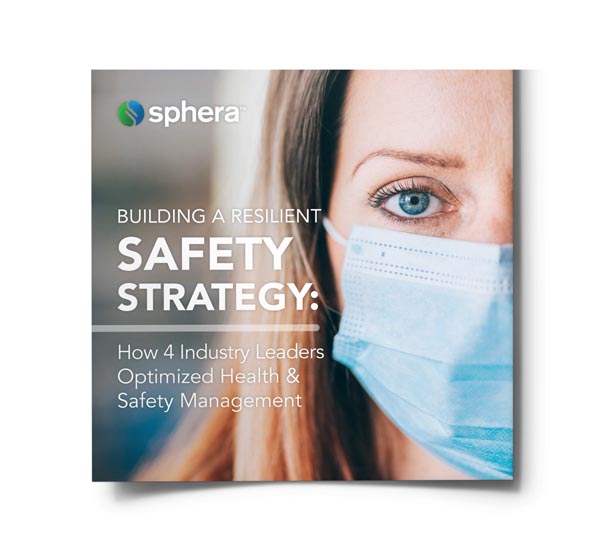
Andy Bartlett:
Now, in the safety case in the UK, every company has to submit one, how they will address their hazards. The people lack the risk awareness amongst the operators on the lack of communications or poor communications. There was little training given on shift handover. There was very little monitoring or auditing. Accidents that involve miscommunication at shift handover on the maintenance or the plant status were becoming quite common.
Andy Bartlett:
When they looked at this, it’s a behavioral aspect, so it’s a difficult topic, people’s behaviors. People don’t need to be told, some feel that they shouldn’t be told, some people coming on shift, they need to challenge what they’ve been told. And then being able to predict what someone else needs to know is also the person writing the shift handover. Does the person coming on think differently to them? And then they need to show an interest in what they’re being told and how do you legislate for that?
Andy Bartlett:
And then importantly, this is the thing I mentioned before, was they need time to make the handover. Where people were jumping on the bus and going straight back to the car park to get away, back to their families, was to them the most important thing once the time had finished. But the shift handover, making time for that was something that we had to work in and it’s recognized as a [inaudible 00:08:50].
James Tehrani:
Was it becoming more like a chore for the people getting off work, one less thing to do before they headed out, and they really were at the point where they wanted their day to be over. And it’s really hard at that point to focus on giving all the information when you’re really just done with your shift and you want to go home?
Andy Bartlett:
In my own, when I was an operator, I carry a little notebook in my pocket and I used to write things in and somewhere towards the end of the shift, I’d go and tell the supervisor, all this needs to go in the handover, this needs to go in the logbook. And sometimes it would get in, sometimes it wouldn’t, it’s all down to time and the importance, or the people’s importance of what the information was.
James Tehrani:
People in process safety probably won’t find this surprising, but people like me who are not involved in process safety, it’s really eye opening to think about. So when we think about some of the major incidents we’ve seen in the last 30, 40 years, your Piper Alpha’s, your Texas cities, your Bundfields, and even your deep water horizons, there seems to be a common theme that shift handover really played a role in causing the incident. Isn’t that right?
Andy Bartlett:
That’s what all of the reports say. It’s been highlighted in those and the Piper Alpha disaster clearly mentioned as one of the factors contributing to the incident, the fairlead of transferred information in the shift handover, that a pressure safety valve had been removed and replaced by a blind fund was not communicated to the next shift. In addition to that, there was no written procedure for shift handover and information that was written in the logbook was left to the operator’s discretion.
Andy Bartlett:
Then you look at Texas city, 2005, the total failure of shift handover management as the CSB and their report. In addition to the range of technical failures, the investigation team found there was no procedures being used during shift handover, the absence of an operator during shift handover, miscommunication on clear information and lack of required details in the logbook were also evident. The finding was, the condition of the unit, specifically the dreg, which a unit was filled with liquid raffinate, it was not clearly communicated from night shift to day shift, which was the major cause of the incident.
Andy Bartlett:
When you’ve got major failures in industrial communication like that, it’s not surprising that most of these incidents, you can trace back to that. Is it a culture? Is it something that people think, “Oh, it’s just a chore,” as you mentioned, but really it’s something that is very, very important to communicate what’s happening. What’s going to happen, which is also as important. What things have started on this shift that are going to continue into the next shift.
James Tehrani:
Definitely, and I understand that there was another incident in the early ’80’s that was another shift handover type related incident that there was some highly radioactive waste that was released into the sea because of it. Can you tell our listeners a little bit about that?
Andy Bartlett:
Yeah. 1983, Sellafield beach incident it’s called. Sellafield’s a large multi-function nuclear site on the west coast of England, one of the biggest sites in Europe actually, it’s got a thousand buildings. So in this particular site, they were transferring radioactive waste liquor between tanks. The logbook, they hadn’t used the correct name for it, they’d used where it was coming from instead of where it was going to. They had no protocol for calling this particular waste what it was. Then there was a serious failure to communicate between shifts and the oncoming shift thought this was safe to discharge to the sea, however it wasn’t. Very, very serious consequences with the beaches being closed as a result and big investigations. Those beaches still not usable.
Andy Bartlett:
So the protocols—
James Tehrani:
They’re still not usable today?
Andy Bartlett:
Yeah, that was the last bit of information I could dig up on this was people checking the beaches to say that there’s still radioactive materials as you dig.
James Tehrani:
Wow, that’s 40 years ago almost.
Andy Bartlett:
So the protocol on naming tank contents, interpretation, ambiguous messaging, and then when they got to investigate it even further, they found that the plant managers who were responsible for shift handover were given a set of objectives rather than procedures, which indicated how an effective handover could be conducted at all levels of management. It wasn’t just the people doing the handover, it was the management hadn’t given them any guidance on what they should be doing, and there was no structure. And that is another thing that you’ll find is structure missing from handovers in a lot of these incidents.
James Tehrani:
Sure. Let’s talk about how handovers have changed over the years. How are they handled nowadays and what are some of the key principles that you would say are really important to ensure a safe handover in a plant?
Andy Bartlett:
OK, so since I left front line operations, which was nine years ago, I visited several facilities, middle east, India. Through our discussions with various customers is what does shift handover need? What do they have and how can they move forward? How can you obtain effective communications at shift change? That’s the word I’m looking for.
Andy Bartlett:
The companies that identify in higher high-risk handovers, they need to develop staff’s communication skills. They need to provide procedures for shift handover, and they need to plan men and civic can be completed in one shift. Having maintenance jobs over shifts is sometimes not the best thing. Having face to face discussions, as we had to do back in my time, both taking responsibility, verbal and written, and the information that was not available to the oncoming shift that they need to ask and say, “Can you give me more information on this?”
Andy Bartlett:
Putting time and resource into shift handover. Improving the methodology such as a computer logs, computer displays. So that information can be made available and kept available as a log file that this is what was said. And the end user, any changes to existing communication methods at shift handover is the communication system out? Do you have problems with the radios? That type of thing also needs to be included, not just the process itself, but the methods that are needed to run the shift.
James Tehrani:
Right, and how can technology help with the shift handover?
Andy Bartlett:
Well, we have a saying in the business, “paper to glass.” If you have a logbook that’s on paper and you put it as an electronic logbook, you haven’t really gained anything, you’re still putting manual entries into it. I’ve done quite a lot of research on this and there are lots of papers out there that look at the subject of shift handover. Everybody has some they different, and everybody has some the same, but one of the reports I read was by Marsh Engineering called the Engineering Position Paper on Shift Handover.
Andy Bartlett:
It’s got some really good information. What are the key points? Let’s recognize first that shift handover is complex, it’s a high risk activity, but it’s not that it’s performed frequently. If we had other high-risk activities that were performed infrequently we will try and engineer them out, or make them smoother, or automate them to minimize the likelihood of errors. That’s where your computer systems come in, solutions.
Andy Bartlett:
Why not automate shift handover to the point where it’s something that is a value and retains the history of what happened. Also then everybody looked at a period of preparation by outgoing personnel. Yes, that needs time. So it needs to allow for time and that in the shift. Handover, where outgoing and incoming personnel communicate to exchange task relevant information. The fist affairs cross checking that information, asking questions as they assume the responsibility for the task, because once the other guys have gone out the door, you responsible. And having a structured handover solution, which obtains information from live feeds as well as notes from outgoing shift.
Andy Bartlett:
If you’ve got information out there. The maintenance of work and all over the shift, and they’ve got a hot work permit. You need to get quick quickly onto that in and check that you coming in you’ve taken responsibility. Is everything how you would want it to be? And the ability to see that where it is. That needs to be in the shift handover. Application that brings together all the activities, the operations activities, what they’re doing, are they draining a tank? Are they taking a sample?
James Tehrani:
Can you kind of go into that though? If you’re doing a shift handover after a tank has been drained, how could that lead to an incident if there isn’t proper communication?
Andy Bartlett:
We had an incident, way back on that one I was telling you about, where a crude tank receives oil from a pipeline and when you settle the tank, and then you have to go and drain the water off it, and then test the tank ready before you can get it ready for shipment to load it onto a tanker. If we had a tank that was being drained of water, and there is an interface when you would start to get oil. This particular day, all the pump started on the slops system and the alarms were going off, we went into logbooks at went, “Oh, that tank was left draining.” Which it shouldn’t have been, but somebody decided that there’s plenty of water in it, I’ll leave it draining and let the next shift take care of it.
Andy Bartlett:
The shift handover hadn’t been that good. It was not a loss of oil because we recovered it from the slop system, but it was a delay in getting the tank ready for shipment. If everything had overflowed in the slop system, then we would have had an oil spill.
Andy Bartlett:
Operational activities, ongoing over shift change and maintenance activities, ongoing over shift change are not ideal. But where these plants run 24/7 they have to be in some places. So that’s where the shift handover is important. That would be the top item, make sure the guy who coming on, this needs to be taken care of. You need to get an operator out there straight away.
James Tehrani:
Maybe it’s a more of a philosophical question, but it always amazes me after thousands and thousands and thousands of years of communication, humans still have trouble with it. I think this is a great example of it during shift handovers, where it’s hard to relay messages, because our brains don’t always remember everything, and depending on what’s going on in our daily life, or our home life, it could really effect that.
Andy Bartlett:
If you’ve got something else on your mind or you don’t happen to like the person that you’re talking to, which I’ve seen. The two shift leaders, they think they’re the best shift they’ve got and don’t really want to listen to the guy going off.
James Tehrani:
So it’s like a power play?
Andy Bartlett:
That’s not the way we do it. That’s not the way we do it on our shift. The successful handover, you wanted to have a clear look ahead for not just the next shift, but the next few shifts. And you want a shared common view that even the supervisor, that the dau foreman or the superintendent, they can also see what that shift handover was. And maybe being sit higher up, they can say, “Oh, I wonder if they did take care of that,” and they can check. But if it’s in a paper logbook, they’ll never see it.
Andy Bartlett:
Being able to manage and execute work activities, according to the schedule is something that the shift handover needs to take a look at it.
James Tehrani:
For sure. Just to quickly go back to a World Day for Safety and Health at Work, the stats that you provided at the beginning of this podcast are really eye opening. It just speaks to the importance of minimizing risks and mitigating risks. I think shift handover seems to be an amazing opportunity to really minimize risk and to cut down on some of these incidents, especially some of these larger ones we’ve seen that are related to shift handover incidents.
Andy Bartlett:
I’d like to finish with one saying it’s not mine, a friend of mine gave it to me, “you don’t manage safety, you manage risk. Safety is an output of effective risk management.” So shift handover has to be part of your risk management program.
James Tehrani:
Excellent. That makes a ton of sense. Well, as always, Andy, this was a pleasure talking to you and hopefully we’ll do it again soon.
Andy Bartlett:
OK James, bye for now.
James Tehrani:
Bye.

